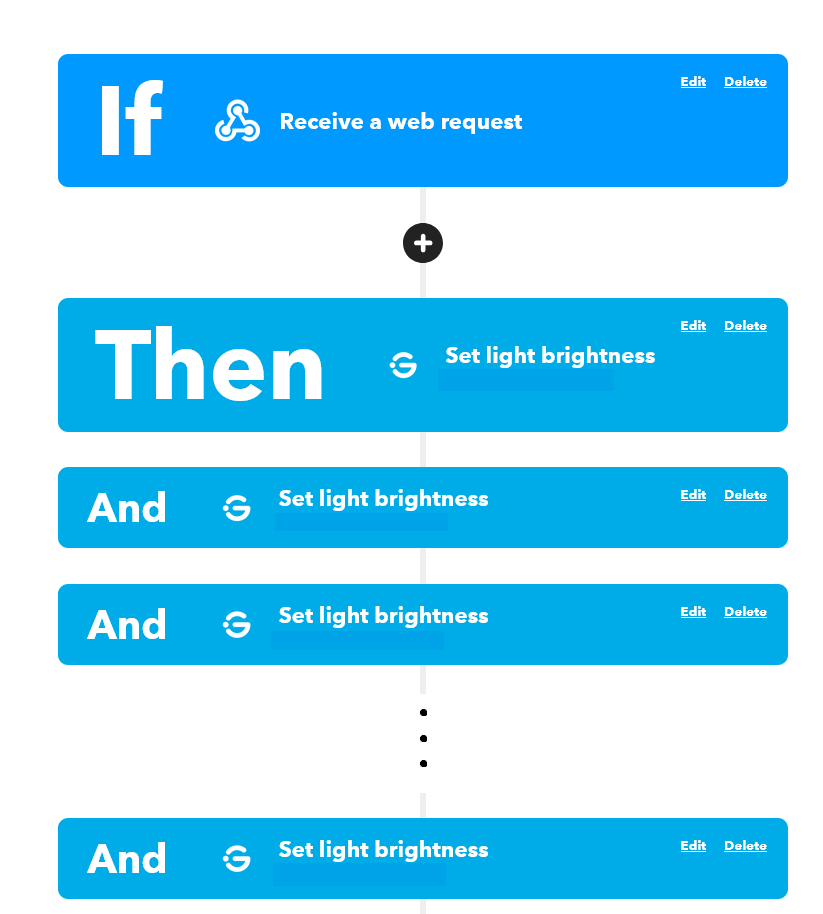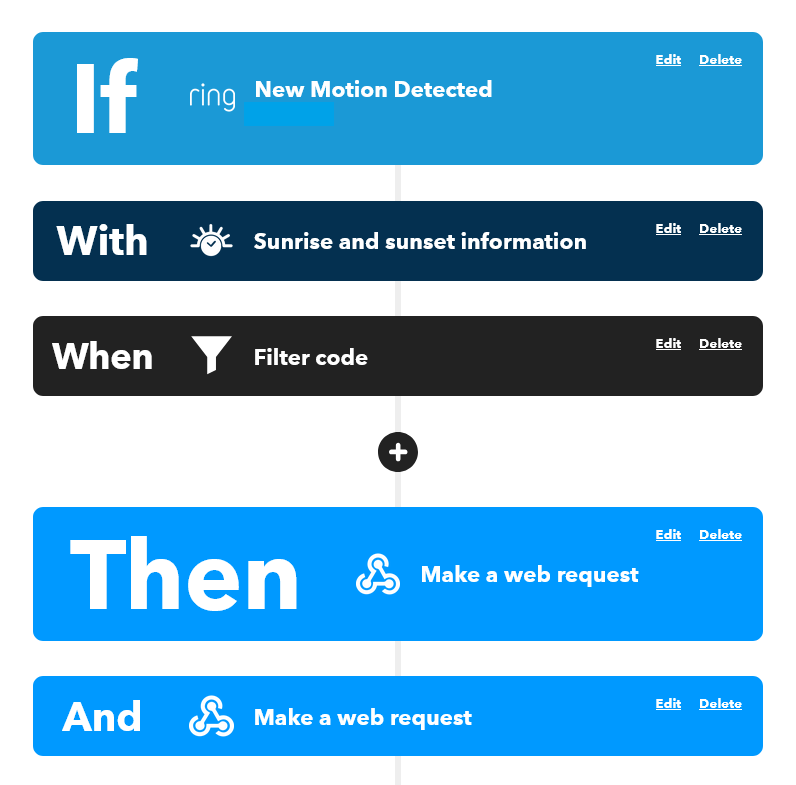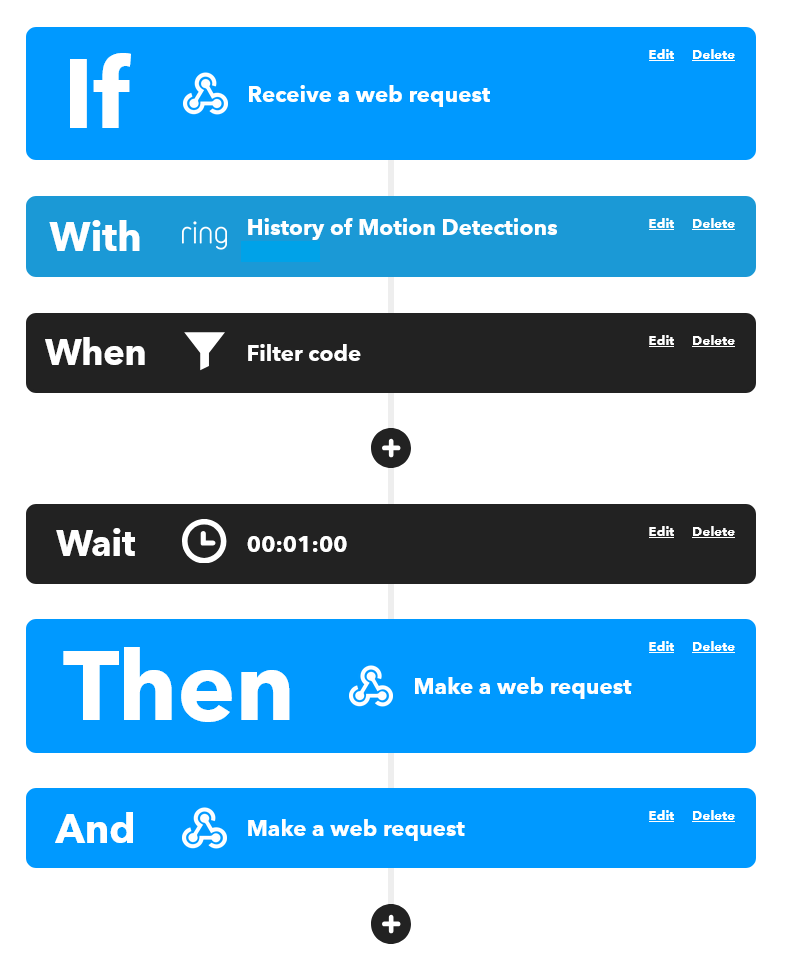Introduction
Home automation is becoming increasingly popular for enhancing both security and convenience in residential settings.
In this second case study, we will explore how to integrate Ring and Blink cameras with Govee lights, ensuring that camera activation automatically triggers the lights to full brightness.
This implementation was designed for a client residing in North America who also had an IFTTT Pro+ account, allowing them to utilize webhooks.
The client had multiple driveway cameras and 15 lights, which were typically set to 20% brightness for ambient lighting.
The Problem
The objective was to create a system that:
- Turns Govee lights to 100% brightness when Ring cameras detect motion.
- Keeps the lights on as long as motion is detected.
- Restores the lights to their original setting when motion stops.
- Operates only between sunset and sunrise.
Challenges
One specific issue encountered was that one of the Ring cameras was not reliably detecting motion at the driveway entrance. To address this, two existing Blink cameras were added as additional triggers.
The Solution
To implement this automation, IFTTT and custom webhooks were used. The adopted approach involves the following steps:
Activating the lights: When any of the cameras (Ring or Blink) detect motion, an IFTTT applet sends a webhook request to turn on all specified Govee lights at 100% brightness.
Persistence timer: A 30-second timer is initiated to check if motion continues. If movement persists, the timer resets, keeping the lights on. If movement ceases, the lights return to their original setting.
Expanded logic:
- Both Ring and Blink cameras can trigger the automation.
- The automation operates only between sunset and sunrise using the “SunriseSunset” service to verify time conditions.
- The lights’ activation duration was extended to 4 minutes for enhanced visibility and security.
Implementation
To streamline the automation setup, two primary IFTTT applets were created to handle brightness control:
Applet #1 – Increase Brightness to 100%
Trigger: Receiving a webhook event named “switchOnLights.”
Actions: Set all specified Govee lights to 100% brightness and white color.

Applet #2 – Dim Lights to 20%
Trigger: Receiving a webhook event named “dimLights.”
Actions: Set all specified Govee lights to 20% brightness.
These two applets support another set of applets that detect motion from cameras and manage the lights accordingly:
Applet #3 – Motion Detection & Light Activation
Trigger: Event received from a Ring or Blink camera.
Query & Filter: Ensures the event occurs between sunset and sunrise (i.e., during nighttime hours).
Actions: Triggers Applet #1 via the “switchOnLights” webhook. Activates Applet #4 using the “startTimer” webhook.

Applet #4 – Timer & Light Dimming
Trigger: Receiving a webhook event named “startTimer.”
Query & Filter: Checks the most recent motion detection from a Ring or Blink camera.
Actions: Waits for one minute. If motion persists, the timer restarts. If motion has stopped, the “dimLights” webhook is triggered.

Conclusion
This automation significantly improves security and visibility around the home, ensuring that lights turn on automatically when motion is detected and switch off when no longer needed. Additionally, it serves as a deterrent against intrusions—if an intruder approaches at night, all lights turn on, making them highly visible.
The integration with IFTTT and WebHooks allowed for a high level of customization and flexibility, successfully resolving the initial issue of unreliable motion detection at the driveway entrance.
By leveraging smart cameras, connected lights, and IFTTT automation, an effective and practical system was established for controlling outdoor lighting. This case study demonstrates how various smart devices can be seamlessly integrated to enhance both security and comfort at home.

